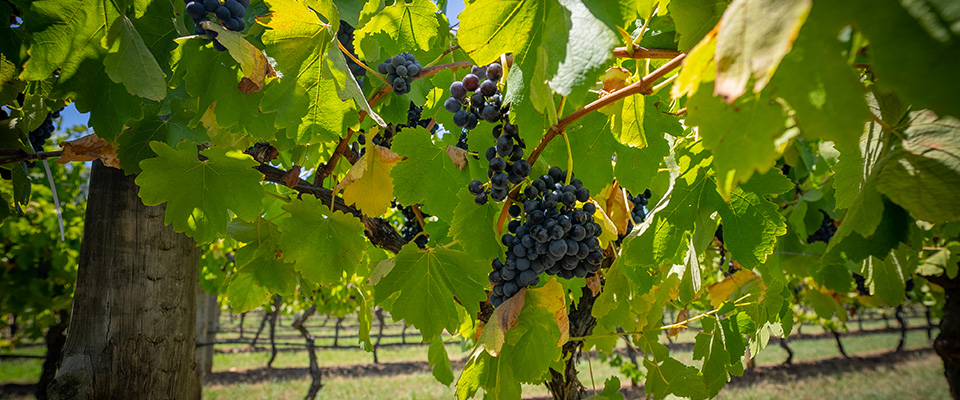Hunter Valley Shiraz
Hunter Valley Shiraz: A Guide
The Hunter Valley stands as Australia's oldest continuously producing wine region, boasting a viticultural heritage that spans almost 200 years. Among its celebrated varietals, Shiraz emerges as the quiet achiever, producing wines that embody a unique regional character. It’s not often known that the Hunter Valley is the birthplace of Australian Shiraz, with some of the oldest vines in Australia. Over time, the winemakers of the Hunter Valley have continued to refine their craft, developing their own house styles while maintaining the beautiful elegance that makes them a perfect match for a range of cuisines. Hunter Valley Shiraz is often a surprise – medium-bodied, more elegant in style than other Australian regions, with beautiful fruit characters.
Scarborough Wine Co. has been making Shiraz since 2003. With much experience in crafting Hunter Valley wines, we now offer three distinct Hunter Valley Shiraz wines for wine enthusiasts to enjoy. Love lighter-bodied wines? You may have just found a new favourite. Read on as we delve in and discover all you need to know about this important grape variety, grown right here in the Hunter Valley but enjoyed everywhere.
A Distinctive Style: Hunter Valley Shiraz
Hunter Valley Shiraz possesses a character that is as much "Hunter" as it is "Shiraz," creating a wine style that is immediately recognisable to seasoned wine enthusiasts. Unlike the powerful, full-bodied Shiraz styles found in South Australia's Barossa Valley or McLaren Vale, Hunter Valley Shiraz is characterised by its medium-bodied profile and distinctive savoury complexity. With age, the wines develop further characteristics, becoming multi-layered, smooth and silky. It’s a unique aspect of the Hunter that we love wine enthusiasts discovering! Once you’ve tried it, you’ll often come back for more.
How does Hunter Valley Shiraz taste?
If you’re a fan of more elegant and less heavy styles of wine, this may just be the shiraz for you! Some of the key characteristics that you can expect to find in a Hunter Valley shiraz are as follows:
- Colour and Structure: Hunter Valley Shiraz typically displays rich purple hues with medium density, reflecting the region's unique terroir. The wines are proudly medium-bodied, featuring a distinctively savoury structure that makes them exceptionally food-friendly.
- Flavour Profile: Young Hunter Valley Shiraz showcases red and dark berry flavours complemented by spices and soft tannins.
- Ageing Potential: Perhaps most remarkably, Hunter Valley Shiraz demonstrates exceptional aging potential. Over 20 to 30 years of bottle aging, these wines undergo a remarkable transformation, developing into silky-textured, earthy wines with notes reminiscent of France's Rhône Valley. This evolution from youthful wine to mature elegance represents one of the most compelling aspects of Hunter Valley Shiraz.
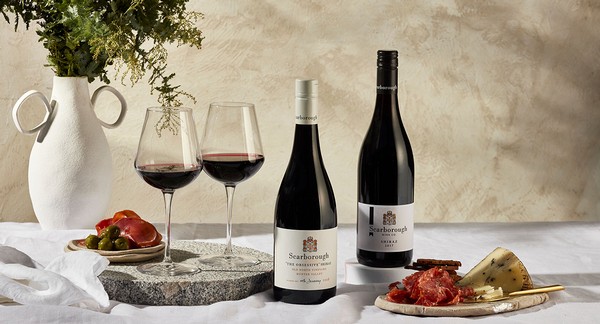
The History of Hunter Valley Shiraz
The Hunter Valley's wine story begins in the 1820s when James Busby planted the first vines in the Pokolbin area. However, it was the arrival of George Wyndham in 1828 that truly established the region's viticultural foundations. Wyndham's Dalwood Estate became one of the valley's first commercial wineries, setting the stage for what would become Australia's most historic and one of the most celebrated wine regions.
By the 1860s, vineyards were well-established throughout the valley, with Shiraz quickly emerging as the region's flagship variety. The grape's ability to thrive in the Hunter's unique climate conditions, combined with its capacity to produce wines of exceptional longevity, established its dominance early in the region's history.
Interestingly, early Hunter Valley Shiraz was not labelled as such. Following European naming conventions, these wines were marketed under labels that reflected style rather than grape variety. Lindeman's famously employed the term "Hunter River Burgundy" for their Shiraz, while Tyrrell's and other producers used similar European appellations to communicate wine style to consumers. Wines that to this day stand up as wines with incredible pedigree and aging potential.
The shiraz of the Hunter Valley has often been put on the map by some of the long-established producers – Tyrrell’s Wines, Mount Pleasant (formerly McWilliams), Lindeman’s, Tulloch, Brokenwood and Audrey Wilkinson are prime examples. Older wines from some of these producers are remarkable, many of which hold up well for decades in the bottle.
Nowadays, family-owned wine brands like Scarborough have also introduced shiraz into their range, alongside other producers like Andrew Thomas, De Iuliis Wines, Silkman Wines, Charteris and Margan. There’s much to discover, but for many it’s not a varietal that you think of when you consider the Hunter because of the tiny amounts produced.
You may be surprised to learn that, based on the 2025 Vintage crush, Shiraz represents 25% of Hunter Valley grape production. A small proportion, given our Hunter Valley region, makes up only 0.4% of the wine grapes crushed in Australia. So, it’s not surprising that many have yet to discover the style of the wines that often remain an insider secret.
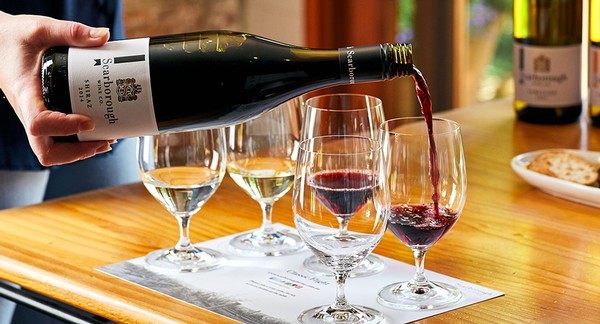
The Hunter Valley Terroir and Climate: The Foundation of Hunter Shiraz
The Hunter Valley experiences a warm, humid subtropical climate that significantly influences Shiraz production. Unlike the Mediterranean climates of South Australian wine regions, the Hunter's climate is characterised by:
- Warm Growing Season: The region experiences consistently warm temperatures during the growing season, but notably without the extreme heat spikes common in other Australian wine regions. This moderate warmth allows for gradual sugar development while maintaining natural acidity levels.
- Rainfall Patterns: The valley receives significant rainfall during the growing season, which can present challenges but also contributes to the wines' distinctive character. The higher humidity levels influence the development of the grapes flavour compounds, contributing to the earthy, savoury characteristics that define Hunter Shiraz.
- Diurnal Temperature Variation: Although not as extreme as in some wine regions, the Hunter Valley still experiences beneficial temperature differences between day and night, which helps preserve aromatics and maintain balance in the finished wines.
The Hunter Valley's diverse soil types also significantly contribute to the distinctive flavours and character of its Shiraz. Whilst not everyone gets excited about the dirt like our winemaking and viticulture team, the soil profile is part of what helps the winemakers in our region craft such a wonderful style.
- Terra Rossa Soils: Much of the valley sits on ancient terra rossa soils that provide excellent drainage while retaining sufficient moisture for vine health. The parentage of these soils are from limestone, which are ancient seabeds with heavy seashell deposits. These soils contribute mineral complexity to the wines.
- Clay and Loam: Areas with heavier clay and loam soils tend to produce Shiraz with more structure and aging potential, as the vines must work harder to extract nutrients, resulting in more concentrated fruit.
- Sandy Loams: Lighter sandy loam soils contribute to wines with more immediate appeal and softer tannin structures.
What foods pair well with Hunter Valley Shiraz?
Hunter Valley Shiraz's medium body and savoury characteristics make it exceptionally food-friendly, particularly with traditional Australian cuisine and game meats.
- Red Meat: The wine's savoury tannin structure complements lamb, beef, and game meats exceptionally well.
- Regional Cuisine: Hunter Valley Shiraz pairs beautifully with the region's local produce, including locally raised beef, game, and artisanal cheeses like those from Binnorie Dairy
- Mediterranean Dishes: The wine's earthy characteristics pair well with olive-based dishes, herb-crusted meats, and tomato-based pastas.
- Asian Fusion: The medium-bodied and spicy characteristics complement modern Asian fusion dishes that incorporate Australian ingredients.
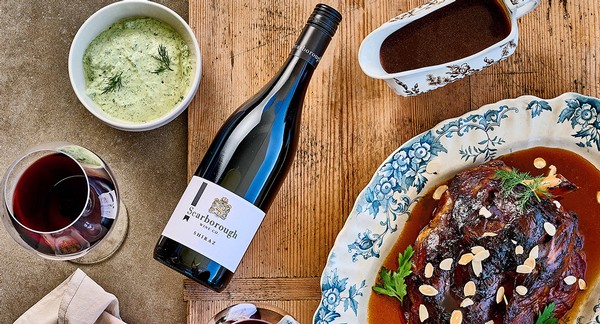
Scarborough Wine Co. Hunter Valley Shiraz
Our family-owned winery, Scarborough Wine Co. launched our first shiraz wine in 2003. Now, much of our Shiraz comes from our Old North Road vineyard, which has a slightly different soil profile than other parts of the Hunter. Listen in as Liz Riley talks about this special vineyard site.
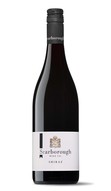
Scarborough Black Label Shiraz
The epitome of Hunter Valley Shiraz – medium bodied, elegant and full of character. This has been a popular red wine in the Scarborough cellar door for decades now, lower in alcohol than many of the shiraz wines you’d find in other parts of Australia. We have aged this wine for a few years to ensure that it is ready for enjoyment on release.
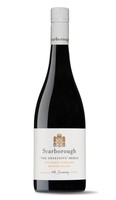
Scarborough ‘The Obsessive’ Shiraz
We’re meticulous about the details of ‘The Obsessive’ Shiraz. This wine comes from a local shiraz vineyard in the Pokolbin area and crafted with much care and the best French oak barrels. A wine that we love to make, even if it’s made in tiny quantities. Drinking beautifully now, or it can be laid down to enjoy for up to 10 years. Try it with braised beef cheeks.
BUY 'THE OBSESSIVE' SHIRAZ NOW
Scarborough Keepers of the Flame Shiraz Trio
These special wines have been waiting for the perfect time to be released. Crafted from a small parcel of Hunter Valley Shiraz from the exceptional 2023 vintage we have made a Shiraz, Shiraz Viognier and Shiraz Tempranillo. Our Keepers of the Flame range celebrates the inspired vision and future of Scarborough Wine Co. These wines will be unveiled later in 2025.
Would you like to try the wines for yourself? Pop by our Hunter Valley Cellar Door and come and taste what all the fuss is about or explore the collection on our online store.

